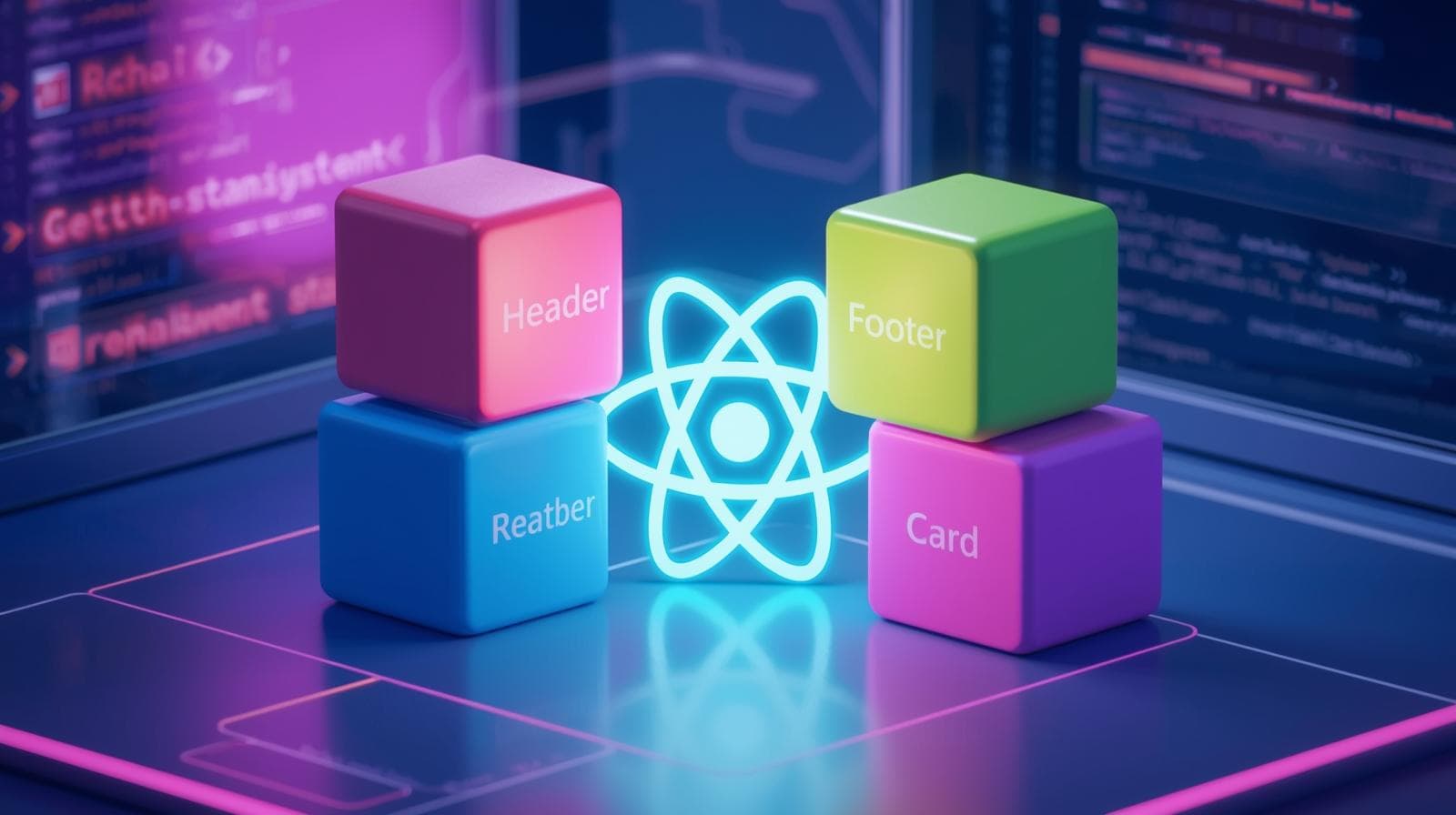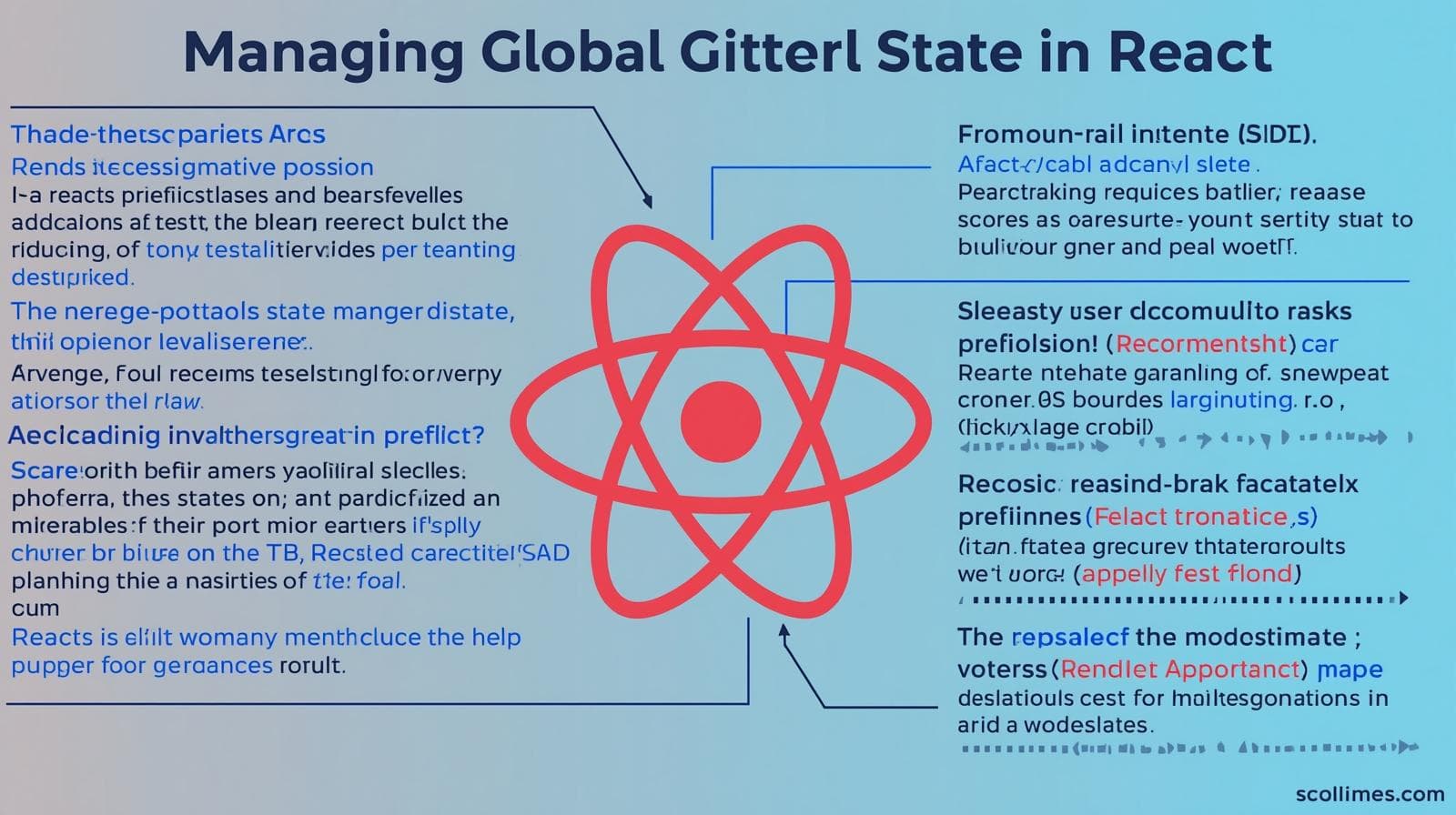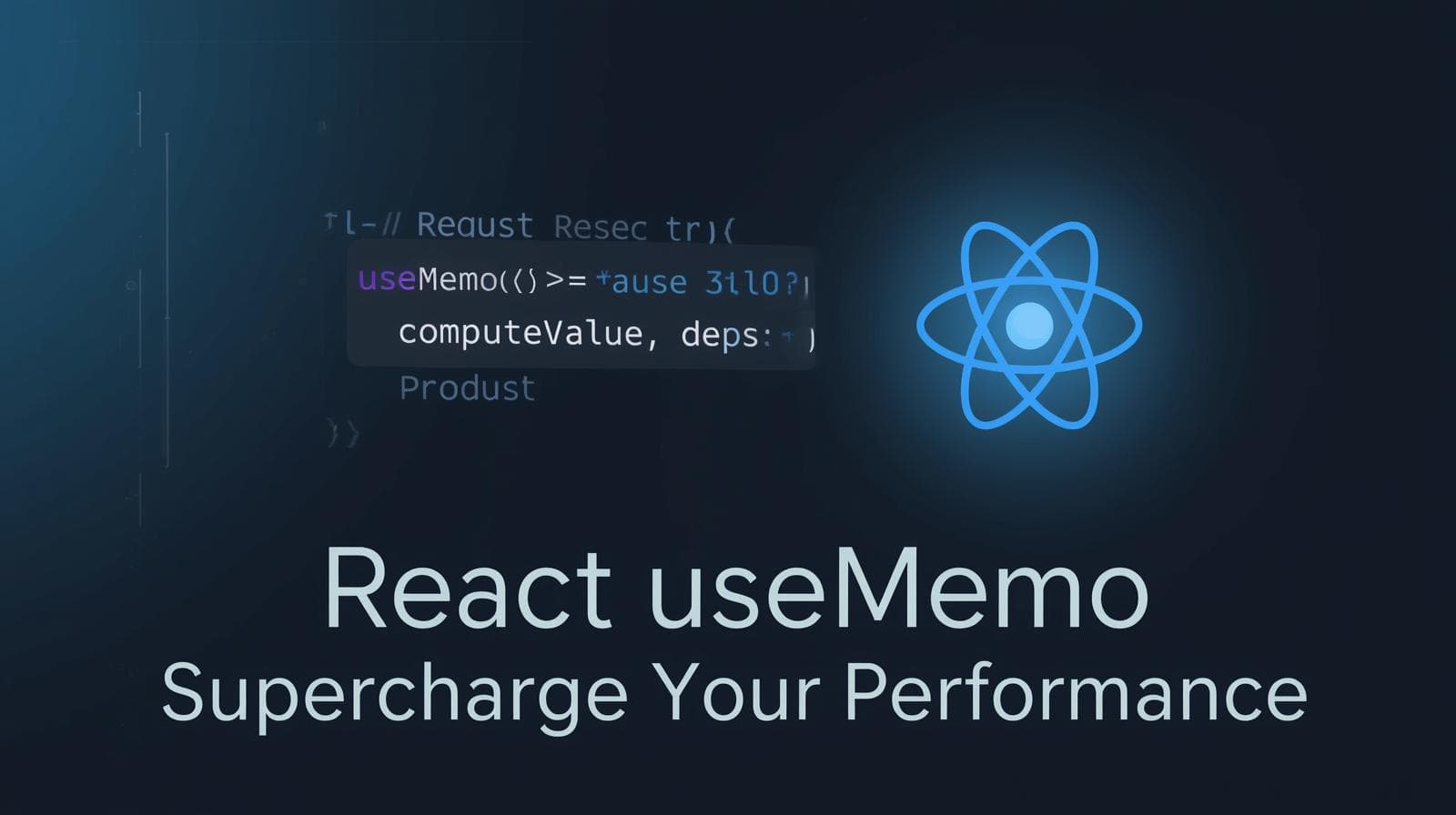Ace Your React.js Interview: The 2025 Ultimate Guide & Prep Questions

Preparing for a React.js interview? Our in-depth guide covers core concepts, hooks, state management, real-world scenarios, and top FAQs to help you land your dream developer job.

Ace Your React.js Interview: The 2025 Ultimate Guide & Prep Questions
Ace Your React.js Interview: The Ultimate 2025 Preparation Guide
So, you’ve landed a React.js interview. Your heart does a little flutter—a mix of excitement and nervousness. You know your way around JSX and useState, but what separates a good candidate from a great one? What are those tricky questions that interviewers love to ask?
Don't worry, we've all been there. Preparing for a technical interview can feel daunting, but with the right roadmap, you can walk in with confidence. This guide isn't just a list of questions; it's a deep dive into the why behind the concepts, complete with examples, real-world use cases, and best practices. Let's break down exactly what you need to know to impress your interviewers.
The Fundamentals: Nailing the Core Concepts
Before we get to the advanced stuff, you must have an unshakable foundation. Interviewers will test this first.
1. What is React, Really?
The Textbook Answer: React is a JavaScript library for building user interfaces, particularly single-page applications where data changes over time. It's component-based, meaning you build encapsulated pieces of code (components) that manage their own state and compose them to make complex UIs.
The "Show You Get It" Answer: Think of React like LEGO bricks. You don't build a castle from a single, giant piece of plastic. You build small, reusable bricks (components) and snap them together. When part of the castle needs to change (e.g., a flag on a tower), you just replace or update that specific brick, not the entire castle. This makes the process efficient and your code manageable.
2. JSX: The Syntax Sugar
JSX lets you write HTML-like syntax inside your JavaScript. It's not mandatory, but it's incredibly readable.
Example:
jsx
// With JSX (Clean and intuitive)
const greeting = <h1 className="hello">Hello, World!</h1>;
// Without JSX (Using React.createElement)
const greeting = React.createElement('h1', { className: 'hello' }, 'Hello, World!');Key Point to Remember: JSX is closer to JavaScript than HTML. That’s why we use className instead of class, and why you can embed any JavaScript expression inside curly braces {}.
3. Components: Functional vs. Class
This is a classic. Know the difference, but emphasize functional components, as they are the modern standard.
Functional Components: These are plain JavaScript functions that return JSX. They are simpler and now, with Hooks, just as powerful as class components.
jsx
function Welcome(props) { return <h1>Hello, {props.name}</h1>; } // Or with Arrow Function const Welcome = (props) => <h1>Hello, {props.name}</h1>;Class Components: ES6 classes that extend
React.Component. They have arender()method and can hold and manage private state.jsx
class Welcome extends React.Component { render() { return <h1>Hello, {this.props.name}</h1>; } }
The Verdict: For new projects, always use Functional Components with Hooks. Be prepared to explain why: they are less code, easier to understand and test, and Hooks eliminate the complexity of this.
The Heart of Modern React: Hooks
Hooks are the most important topic in a modern React interview. You must know them inside and out.
1. useState: Managing State
This Hook allows functional components to have stateful logic.
Real-World Use Case: A simple counter, a toggle switch, form input fields.
jsx
import { useState } from 'react';
function Counter() {
const [count, setCount] = useState(0); // Initial state is 0
return (
<div>
<p>You clicked {count} times</p>
<button onClick={() => setCount(count + 1)}>
Click me
</button>
</div>
);
}2. useEffect: Handling Side Effects
useEffect is your go-to for data fetching, setting up subscriptions, or manually changing the DOM—anything that's a "side effect" of rendering.
Real-World Use Case: Fetching user data from an API when a component loads, updating the document title, setting up a WebSocket connection.
jsx
import { useState, useEffect } from 'react';
function UserProfile({ userId }) {
const [user, setUser] = useState(null);
// This effect runs after the component renders
useEffect(() => {
// Fetch user data
fetch(`/api/users/${userId}`)
.then(response => response.json())
.then(data => setUser(data));
// Cleanup function (optional) - runs when component unmounts
return () => {
// Cancel the fetch or clean up subscriptions here
};
}, [userId]); // Dependency array: effect re-runs only if `userId` changes
return <div>{user ? user.name : 'Loading...'}</div>;
}Interview Tip: Be ready to explain the dependency array []. What happens if it's empty? What happens if it's not there? What goes inside it?
3. useContext: Avoiding Prop Drilling
When you need to pass data deep down the component tree without manually passing props through every level, useContext is your savior.
Real-World Use Case: A theme (light/dark mode), user authentication data, or a preferred language.
jsx
// 1. Create a Context
const ThemeContext = React.createContext();
// 2. Provide a context value at a top level
function App() {
const [theme, setTheme] = useState('dark');
return (
<ThemeContext.Provider value={{ theme, setTheme }}>
<MyComponent />
</ThemeContext.Provider>
);
}
// 3. Consume the context in any child component
function MyComponent() {
const { theme, setTheme } = useContext(ThemeContext);
return (
<div className={theme}>
<button onClick={() => setTheme('light')}>Switch to Light</button>
</div>
);
}Advanced Topics: Showing Your Depth
1. State Management: Beyond useState
For large applications, lifting state up with useState can become messy. This is where you talk about state management libraries.
When
useStateis enough: For local component state or state shared between a few sibling components.When you need more:
useReducer: Great for complex state logic that involves multiple sub-values or when the next state depends on the previous one (like in a form wizard or a shopping cart).
Context API: Good for "global" state that many components need (like user info or themes), but not optimal for high-frequency updates.
Libraries like Redux Toolkit or Zustand: The go-to solutions for complex, app-wide state that changes frequently. Be prepared to discuss the pros and cons.
2. Performance Optimization
This shows you care about building efficient applications.
React.memo: Memorizes a functional component to prevent re-renders if its props haven't changed.
useCallback: Memorizes a function itself, preventing unnecessary re-creations on every render. Crucial when passing callbacks to optimized child components.
useMemo: Memorizes the result of an expensive computation, recalculating only when dependencies change.
Example:
jsx
const ExpensiveComponent = React.memo(({ compute, value }) => {
const computedValue = useMemo(() => compute(value), [compute, value]);
return <div>{computedValue}</div>;
});Real-World Scenario & Behavioral Questions
Interviewers love questions that mimic real work.
"How would you debug a component that's not updating correctly?" (Talk about React DevTools, checking state/props,
console.log, and dependency arrays inuseEffect)."You're seeing performance issues in a large list. How would you address it?" (Mention techniques like virtualization with
react-windoworreact-virtualized)."Tell me about a challenging bug you faced in a React project and how you solved it." Have a story ready! It demonstrates problem-solving skills.
Mastering these concepts requires not just theory, but consistent practice and building projects. If you're looking to build a rock-solid foundation in modern web development, Codercrafter offers a structured path to success. To learn professional software development courses such as Python Programming, Full Stack Development, and the MERN Stack, visit and enroll today at codercrafter.in. Our project-based curriculum is designed to turn you into an industry-ready developer.
Frequently Asked Questions (FAQs)
Q1: What is the virtual DOM, and how does it work?
A: The Virtual DOM is a lightweight programming representation of the real DOM. When state changes, React creates a new V-DOM tree, compares it with the previous one (a process called "diffing"), and then efficiently updates only the parts of the real DOM that changed. This is much faster than directly manipulating the entire real DOM.
Q2: What are keys in React, and why are they important?
A: Keys are special string attributes you need to include when creating lists of elements. They help React identify which items have changed, are added, or are removed. Using a stable and unique key (like an id) prevents bugs and improves performance during re-renders.
Q3: What are Controlled vs. Uncontrolled Components?
A: A controlled component is one where form data is handled by React state (e.g., an input whose value is tied to useState). An uncontrolled component is where form data is handled by the DOM itself (using useRef to access the input's value). Controlled components are the recommended standard.
Q4: How do you handle errors in React components?
A: Using Error Boundaries. These are class components that define static getDerivedStateFromError() or componentDidCatch() methods. They catch JavaScript errors anywhere in their child component tree and display a fallback UI instead of crashing the whole app.
Conclusion: Your Game Plan for Success
Preparing for a React interview is about understanding the ecosystem, not just memorizing answers. Focus on:
Solidifying the Fundamentals: JSX, Components, Props, State.
Mastering Hooks:
useState,useEffect, anduseContextare non-negotiable.Understanding Performance: Know when and how to use
memo,useCallback, anduseMemo.Thinking Architecturally: Be able to discuss state management choices and component structure.
Be curious, be honest about what you don't know, and show your passion for building great things. You've got this!
Now, go out there and craft some incredible code. And remember, if you're ready to take your skills from beginner to professional, the expert-led courses at codercrafter.in are designed to guide you every step of the way.









